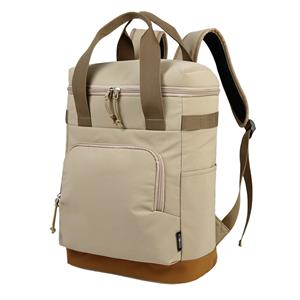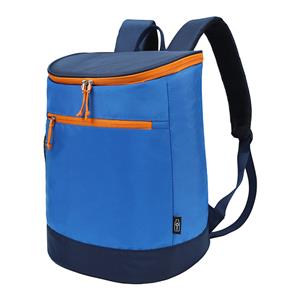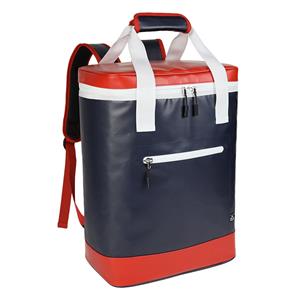Camping Coolers: The Art and Science of Proper Packing
Once you've selected the perfect camping cooler for your needs, the next critical step in ensuring its optimal performance lies in how you pack it. Proper packing techniques are both an art and a science, requiring careful planning, strategic organization, and an understanding of thermodynamics to maximize temperature retention and preserve the quality of your food and beverages throughout your camping trip. Mastering these techniques can elevate your camping experience, preventing the disappointments of warm drinks or spoiled food and allowing you to focus fully on the joys of outdoor life.

The foundation of effective cooler packing begins before you even start loading items. Pre - chilling the cooler is a step that many campers overlook but can significantly impact performance. By placing the empty cooler in a cool environment, such as a refrigerator or a shaded area with ice packs, for several hours before use, you lower the interior temperature, which means your ice or cooling elements won't have to work as hard to maintain the desired cold environment once packed. This pre - conditioning is especially important if you're preparing the cooler in a warm garage or on a hot day.
The choice and quantity of cooling agents are paramount. Ice remains the most common and accessible cooling agent, but its effectiveness depends on how it's used. Crushed ice tends to conform better to the cooler's interior and the items inside, providing more comprehensive contact and better cooling. However, it melts faster than block ice, which is slower to melt and maintains colder temperatures for longer periods. Many campers use a combination of both, with block ice placed at the bottom and crushed ice used to fill gaps around items. Ice packs are another option, offering the advantage of not creating excess water as they cool. They come in various sizes and can be strategically placed throughout the cooler. Some advanced ice packs utilize phase - change materials that maintain a specific temperature for extended durations, adding another layer of temperature control.
The way items are arranged within the cooler significantly affects cooling efficiency. Perishable food items should be placed in direct contact with the cooling agents whenever possible. Meats, dairy products, and prepared dishes should be stored in leak - proof containers to prevent cross - contamination and spoilage. Organizing the cooler with heavier items at the bottom and lighter ones on top can help maintain stability during transit and reduce shifting, which can create air pockets and compromise cooling. Using the "first in, last out" principle for perishables can help ensure that items are consumed in a logical order before they spoil. For longer trips, grouping items by meal can streamline preparation and minimize the need to repeatedly open the cooler, which leads to cold air loss.
Dry goods and non - perishables should be stored in a way that minimizes their exposure to moisture from melting ice. Placing them in waterproof bags or containers not only protects them from water damage but also helps maximize the cooler's insulation efficiency by reducing the volume of air that needs to be cooled. Some campers use separate coolers for dry goods and beverages to prevent the transfer of odors and to allow for more targeted temperature management. If using a single cooler, designating specific zones for different types of items can achieve a similar effect.
The sequence of packing also deserves attention. Begin by placing a layer of ice or ice packs at the bottom of the cooler. Next, add your frozen items, such as frozen water bottles or frozen food, which will help sustain the cold environment as they thaw. On top of these, arrange your perishable items, surrounding them with additional ice or ice packs. Finally, fill any remaining gaps with ice or ice packs to minimize air space, which is the enemy of consistent cooling. The lid should be closed as soon as possible after each packing step to preserve the cold chain.
During the camping trip, managing the cooler's usage is just as important as how it's packed. Limiting the number of times the cooler is opened prevents warm air from entering and cold air from escaping. Planning designated times for accessing the cooler, such as during meal preparation, and gathering all needed items in one go can reduce the cumulative heat gain. Some coolers come with external beverage holders or separate compartments that allow for access to drinks without opening the main cooler, which is a smart feature to utilize.
In situations where you're camping for multiple days and ice replenishment is necessary, having a strategy for adding ice is essential. New ice should be placed on top of the existing ice and items, rather than mixing it in, to avoid disturbing the established cold environment. If possible, adding ice at night allows it to begin cooling before the warmer daytime temperatures impact the cooler.
For campers who enjoy fishing or catching fresh seafood during their trips, the cooler plays a dual role in preserving both brought - along perishables and freshly caught items. Designating a separate section of the cooler or using a secondary cooler for the fresh catches ensures that blood and odors don't contaminate other food items. Using ice or ice packs specifically allocated for this purpose helps maintain the necessary sanitation and temperature levels.
The art of cooler packing also involves adapting to the specific dynamics of each camping trip. Factors such as the number of campers, the duration of the trip, the climate, and the availability of ice resupply will all influence how you pack and manage your cooler. Flexibility and the ability to adjust your strategy based on real - time conditions are valuable skills that come with experience.
In essence, proper packing transforms your camping cooler from a simple storage container into a highly efficient preservation system. It's the culmination of thoughtful preparation, scientific understanding, and practical execution that ensures your food stays fresh, your drinks stay cold, and your camping experience remains enjoyable and stress - free. By mastering these packing techniques, you'll unlock the full potential of your camping cooler and enhance every moment of your time in the great outdoors.





